It may seem like a bunch of random numbers and letters are on your tire sidewall, but they all actually mean something. These letters and numbers tell you the tire size, type of tire and the safety standards. We will teach you how to read your tires below.
The first character(s) in a tire size designate the tire's class. In this example, "P" indicates that the tire is a passenger car tire. An "LT" before the tire size designates a light truck tire, and no letter before the size indicates that it is a European metric tire.
A metric tire's section width is measured in millimeters. This measurement is taken from sidewall to sidewall. In this example, the section width of the tire is 205mm.
This number refers to the height of the sidewall. It is a percentage of the section width. In this example, 65 percent of the section width of 205mm equals 133. 25.
The "R" in this example indicates radial tire construction.
This indicates the wheel diameter in inches.
The first number indicates the tire's diameter in inches. In this example, the tire manufacturer has determined that this is a 35" tire. However, actual measured overall diameters vary from one manufacturer to the next.
Standard tire width is indicated in inches with the decimal point removed. Therefore, in this example, the number 1250 indicates that this tire is 12.5" wide.
The "R" in this example indicates radial tire construction.
This indicates the wheel diameter in inches.
The last letter in a standard tire size indicates the number of layers used in the construction of the tire.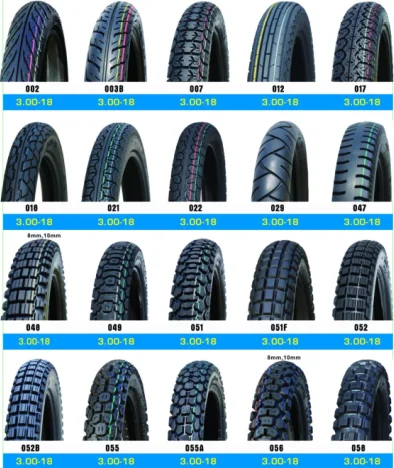 If there is no letter, the tire has the standard 4 plies. A "C" indicates 6 plies, a "D" indicates 8 plies, and an "E" indicates 10 plies. The higher the number of plies in a tire, the stronger the tire is and the more air pressure the tire can safely hold. Higher ply tires require more air pressure to maintain proper wear.
If there is no letter, the tire has the standard 4 plies. A "C" indicates 6 plies, a "D" indicates 8 plies, and an "E" indicates 10 plies. The higher the number of plies in a tire, the stronger the tire is and the more air pressure the tire can safely hold. Higher ply tires require more air pressure to maintain proper wear.
The load index indicates the maximum amount of weight a tire can safely carry. Load index ranges from 0 to 279 and corresponds with the load-carrying capacity of a tire. Passenger car tire load indices typically range from 75 to 105. It is very important to maintain the proper load index for your vehicle when replacing your tires. See our load index chart for more information.
A tire receives its speed rating from the U.S. Government by meeting minimum standards for reaching and sustaining a specified speed. In general, a higher speed rating will result in better vehicle handling.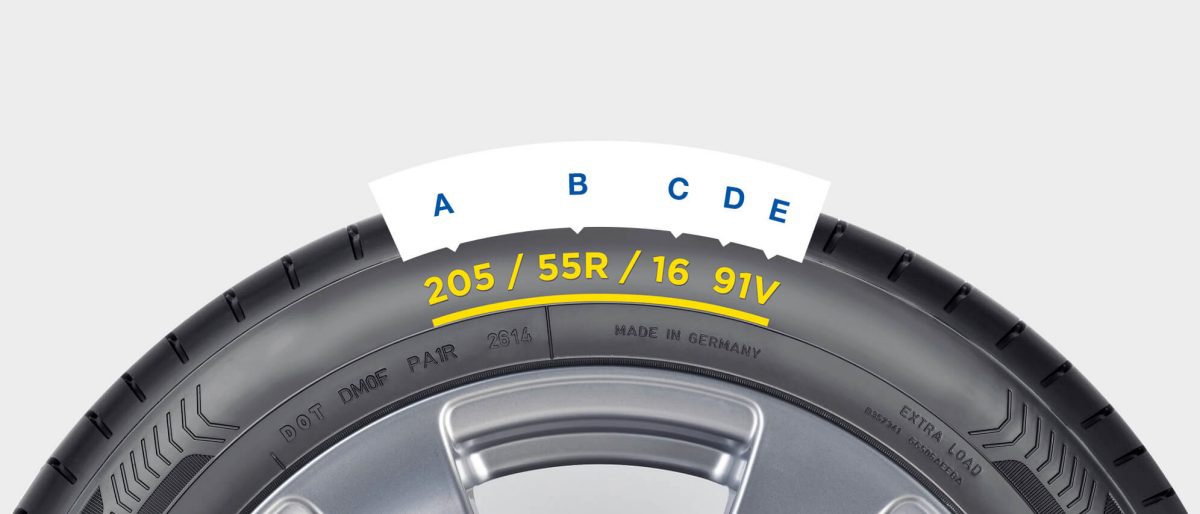 See our speed rating page for more information and a list of the various speed ratings.
See our speed rating page for more information and a list of the various speed ratings.
The "DOT" marking indicates that the tire meets or exceeds the U.S. Department of Transportation's safety standard for tires.
The first two letters following the DOT marking are codes to identify the manufacturer of the tire and the manufacturing plant.
The third and fourth characters following the DOT marking are codes representing the tire size.
The final three or four letters are codes representing other significant characteristics of the tire as determined by the manufacturer.
The first pair of digits identifies the week the tire was manufactured. In this case, the tire was manufactured in the 11th week. The number 01 would indicate the first week of January, whereas the number 52 would indicate the last week of December.
The second pair of digits identifies the year that the tire was manufactured, in this case 2005.
The treadwear rating is a measurement of the tire's durability, but not the projected tread life. It is important to remember that road surfaces, driving habits, and other factors determine actual tread life. Each tire manufacturer independently determines treadwear through their own tests. Treadwear is not based on any one industry or government standard.
The traction rating is a measurement of a tire's ability to stop on a straight, wet surface under controlled conditions. It does not indicate the tire's cornering ability on a wet surface or its traction on ice or snow. Traction grades include AA, A, B, and C, with AA being the highest grade available.
The temperature rating is a measurement of a tire's resistance to heat generation under normal operating conditions at recommended inflation pressures.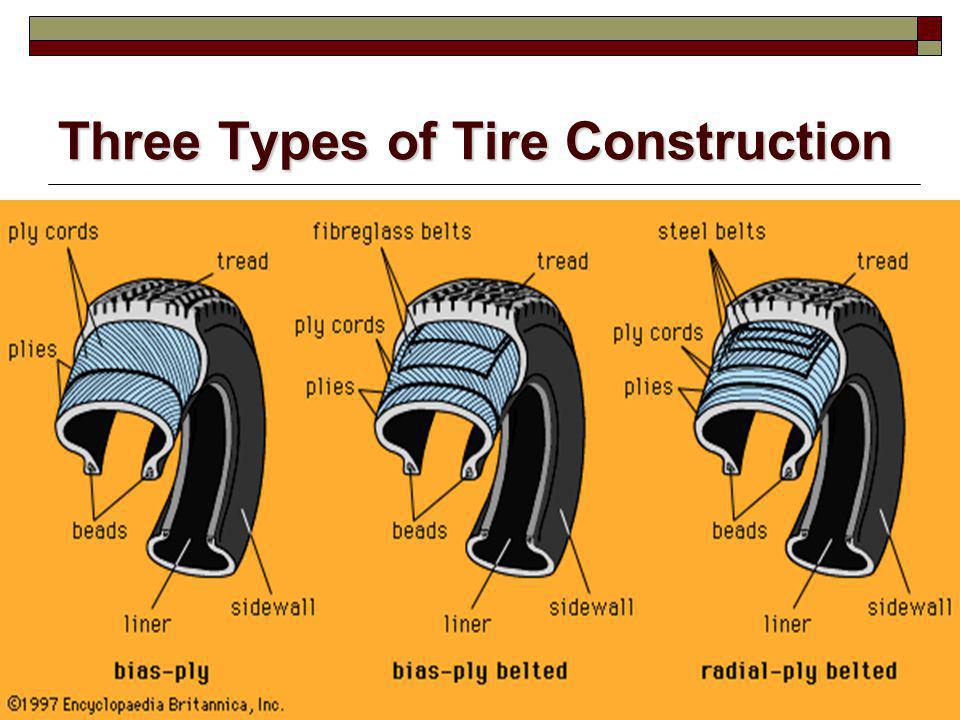 Temperature grades range from A to C, with A being highest rated and therefore most resistant to heat generation.
Temperature grades range from A to C, with A being highest rated and therefore most resistant to heat generation.
This indicates the tire's maximum load-carrying capabilities when the tire is inflated to its maximum inflation pressure, as indicated on the sidewall. Max load is based on standards set by the National Highway Traffic Safety Administration (NHTSA)
This indicates the maximum operating inflation pressure of the tire. It does not indicate the manufacturer's recommended inflation pressure, nor does it indicate the proper air pressure based on the vehicle the tire is mounted on. This category is also based on NHTSA standards.
Note - Some tires are marked 'Extra Load', 'XL', or 'RF' (for reinforced). This simply denotes that the tire's indicated maximum load and air pressure are higher than a standard load tire.
This indicates what materials are used in the tire's plies, and the quantity of each type included.
Some tires indicate the direction of rotation on the sidewall, while others indicate a specific side of the tire that is intended to face outward from the vehicle. Another type of tire combines both indications. It is important that these tires be mounted according to the indicated instructions.
Directional tires feature arrows on the sidewall that indicate what direction the tire should rotate when the vehicle is moving forward.
Asymmetrical tires have the word "outside" labeled on the side of the tire that should face outward from the vehicle.
Tires that are both directional and asymmetrical will indicate what direction the tire must rotate, as well as what side must face outward from the vehicle.
Your browser's Javascript functionality is turned off.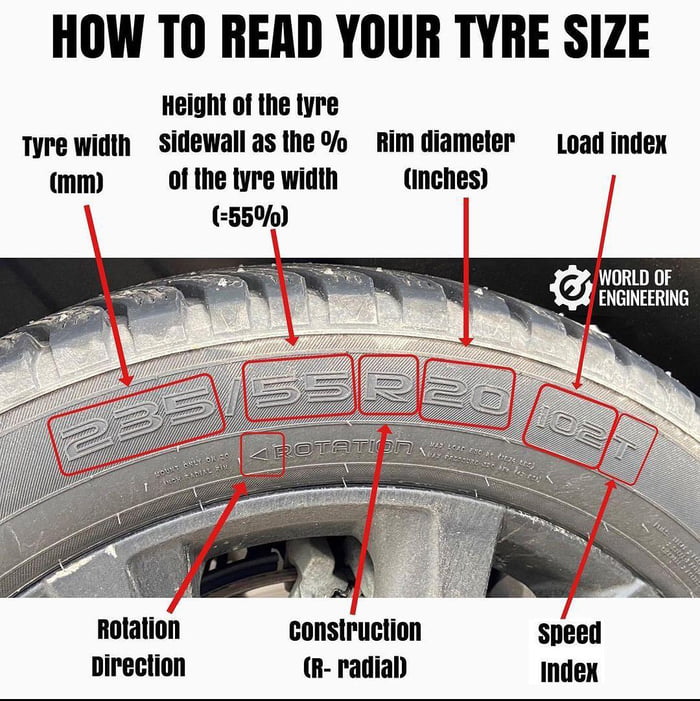 Please turn it on so that you can experience the full capabilities of this site.
Please turn it on so that you can experience the full capabilities of this site.
At one time, you could gauge a tire’s construction and load-carrying capabilities by the number of plies or layers used to make the tire. The days of counting the number of plies may be gone, but the idea lives on in the Tire Ply Rating. Here’s what those ratings mean and how to get the right tires for your needs.
In the early and mid part of the 20th century, cotton fibers were used in tires to add strength. Those fibers ran at a specific angle to the tread to make bias-ply and radial tires. Steel wires would eventually replace the cotton. However, the number of plies (or layers) in a tire was still counted and used to determine its load-carrying capacity when fully inflated.
Fast forward to today, and tire plies are manufactured with rubberized textile cords wrapped under the beads of the tire. This design makes it possible to use fewer plies and layers to achieve equal or greater strength. That’s why we use the term Ply Rating. This information can also be indicated as Load Range.
That’s why we use the term Ply Rating. This information can also be indicated as Load Range.
You’ll find the information about a tire’s Ply Rating on the tire’s sidewall. You’re looking for the Construction Type or Load Range (D in the image below).
While Load Range and Ply are used interchangeably, you’ll need the chart in our article Using Load Index and Load Range to Pick the Right Tires to pinpoint the ply rating that corresponds to a Load Range of A – F.
| LOAD RANGE | PLY RATING |
|---|---|
| A | 2 |
| B | 4 |
| C | 6 |
| D | 8 |
| E | 10 |
| F | 12 |
When referring to the first chart in the article, you’ll notice the Load Index. This number correlates to the maximum safe carrying capacity of the tire when it’s inflated to its maximum pressure. Higher load index ratings mean your tires may be able to handle a heavier load.
This number correlates to the maximum safe carrying capacity of the tire when it’s inflated to its maximum pressure. Higher load index ratings mean your tires may be able to handle a heavier load.
If you don’t see a Load Range or Ply Rating, you might find the letters P (passenger rated, which is 4-ply rated or lower), LT (light truck, which is 6-ply rated or higher), or XL (extra load is typically 4-ply rated with a higher-than-standard Load Index) stamped on the tires.
If you drive a cargo van (such as a Ford Transit), you may see the letter C, which on these particular tires stands for “cargo” at the end of your tire size. This is not to be confused with a 6-ply rated tire. Refer to the Load Index for your vehicle to ensure you get the proper tires. If you’re not sure, stop by Les Schwab.
You can always leave the Tire Ply Ratings, Load Indexes and Load Ranges to the pros at Les Schwab. We’ll show you the best tires for your vehicle and needs. Schedule an appointment that works for you or stop by your local Les Schwab and we’ll help you out.
We’ll show you the best tires for your vehicle and needs. Schedule an appointment that works for you or stop by your local Les Schwab and we’ll help you out.
Find Your Store
Author: Andrey Sudbin
Well, the time has come for you to take care of buying a new set of tires. Of course, you will have a final opinion about the chosen model only after you have driven several thousand kilometers. Perhaps everything will suit you, or perhaps some aspects will disappoint you ... Nevertheless, a lot of useful information could be obtained even in the tire salon. It was enough just to read the inscriptions on the sidewall.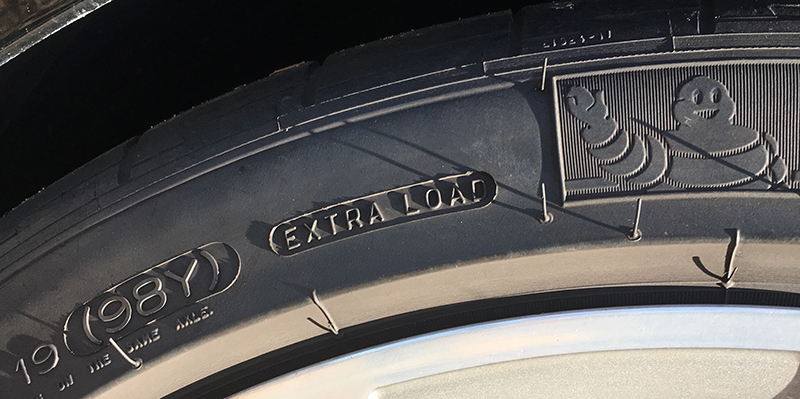
Alas, most of us are limited to reading the name of the manufacturer, model name, and, well, the dimension. And if you should not expect any problems with identifying a tire by manufacturer and model, then with the dimension, in fact, everything is not so simple ...
As a rule, the dimension is indicated by three digits in the format XXX / XX R XX. The first three digits are the profile width in millimeters. Profile, not tread! And if you attach a tape measure to the tire, then the tread width, as a rule, will be less than the three-digit number given. The second two-digit number is the profile height, but not its absolute value, but the ratio of the profile height to its width, expressed as a percentage. However, off-road enthusiasts are well aware that the mud tires they respect so much, as a rule, have a completely different designation. In this case, the first number is the overall diameter of the tire in inches, and the second is the profile width, again in inches, for example, 33/12. 5 or 31/10.5. After all, it is critically important for them that the tire has sufficient width: the larger the width and outer diameter, the larger the area of the contact patch, the less pressure on the ground and the higher the ability to roll over an obstacle. But at the same time, the tire must still fit in the wheel arches, even with technical tricks in the form of a lift ...
5 or 31/10.5. After all, it is critically important for them that the tire has sufficient width: the larger the width and outer diameter, the larger the area of the contact patch, the less pressure on the ground and the higher the ability to roll over an obstacle. But at the same time, the tire must still fit in the wheel arches, even with technical tricks in the form of a lift ...
This is followed by the letter R. Contrary to popular belief, it does not mean the word "radius" at all, but that the tire has a radial construction (which does not negate the fact that you will see the word RADIAL on another sidewall). By the way, initially all tires had a diagonal design, in which the cord threads that make up the inner frame went diagonally from bead to bead. But in 1914, Hamilton and Sloper patented a tire design in which the cords were sewn in the transverse direction. This design turned out to be more difficult to manufacture and repair, but it gave a number of advantages: the mileage of such tires became higher, and the tendency to slip under lateral loads was less, and the tension of the threads under loads was lower, which made it possible to reduce the number of carcass layers. So, although the development of mass production of such tires took almost 25 years, today almost all tires have a radial design. Nevertheless, for general development, let us clarify that diagonal tires are still produced today, for example, for motorcycles, trucks and special equipment. In this case, instead of the letter R in the dimension, there will be the letter D or a dash, and if the tire has a diagonal belt design, then the letter B will be in this position. In addition, for complete clarity, the manufacturer can put the inscription RADIAL or DIAGONAL on the sidewall.
So, although the development of mass production of such tires took almost 25 years, today almost all tires have a radial design. Nevertheless, for general development, let us clarify that diagonal tires are still produced today, for example, for motorcycles, trucks and special equipment. In this case, instead of the letter R in the dimension, there will be the letter D or a dash, and if the tire has a diagonal belt design, then the letter B will be in this position. In addition, for complete clarity, the manufacturer can put the inscription RADIAL or DIAGONAL on the sidewall.
The two numbers following the letter R indicate the DIAMETER of the tire's landing rim in inches, so the common expression "tires of such and such (for example, 16th) radius" is absolutely illiterate.
Not far from the dimension, the load and speed index is usually placed: a two-digit number and a letter of the Latin alphabet. And here, in order to understand what the combination of 92T or 99W means, you still have to look at the table (unless, of course, you have an eidetic memory or have not graduated from intelligence school, where you were specially trained to memorize large amounts of information). The full table starts at zero (which corresponds to a maximum load of 45 kg per wheel) and ends with a value of 279(13,600 kg per wheel), but we are interested in the range from 62 (265 kg) to 126 (1700 kg / wheel), since this range fits all conceivable loads that tires of cars, crossovers and SUVs can experience.
The full table starts at zero (which corresponds to a maximum load of 45 kg per wheel) and ends with a value of 279(13,600 kg per wheel), but we are interested in the range from 62 (265 kg) to 126 (1700 kg / wheel), since this range fits all conceivable loads that tires of cars, crossovers and SUVs can experience.
| Loading Index | ||||||||||||||||||||||||
| 63 | 272 | | 86 | 530 | | 109 | 1030 | |||||||||||||||||
| 64 | 280 | | 87 | 545 | 110 | 1060 | ||||||||||||||||||
| 65 | 290 | | 88 | 560 | | 111 | 1090 | |||||||||||||||||
| 66 | 300 | | 89 | 580 | | 112 | 1120 | |||||||||||||||||
| 67 | 307 | | 90 | 600 | | 113 | 1150 | |||||||||||||||||
| 68 | 315 | |
| 615 | | 114 | 1180 | |||||||||||||||||
| 69 | 325 | | 92 | 630 | | 115 | 1215 | |||||||||||||||||
| 70 | 335 | | 93 | 650 | | 116 | 1250 | |||||||||||||||||
| 71 | 345 945 | | 94 | 670 | | 117 | 1285 | |||||||||||||||||
| 72 | 355 | | 95 | 690 | | 118 | 1320 | |||||||||||||||||
| 73 | 365 | | 96 | 710 | | 119 | 1360 | |||||||||||||||||
| 74 | 375 | | 97 | 730 | | 120 | 1400 | |||||||||||||||||
| 75 | 387 | | 98 | 750 | | 121 | 1450 | |||||||||||||||||
| 76 | 400 | | 99 | 775 | | 122 | 1500 | |||||||||||||||||
| 77 |
| 100 | 800 | | 123 | 1550 | ||||||||||||||||||
| 78 | 425 | | 101 | 825 | | 124 | 1600 | |||||||||||||||||
| 79 | 437 | 102 | 850 850 | | 125 | 1650 | ||||||||||||||||||
| 80 | 450 | | 103 | 875 | | 126 | 1700 | |||||||||||||||||
| 81 | 462 | | 104 |
| | | | |||||||||||||||||
| 82 | 475 | | 105 | 925 | | | | |||||||||||||||||
| 83 | 487 | | 106 | 950 | | | 900 A6 | A7 | A8 | B | C | D | E | F | G | J | K | L | N | |||||
| Speed, km/h | 93 93 93 5 | 10 | 15 | 20 | 25 | 30 | 35 | 40 | 50 | 60 | 65 | 70 | 80 | 90 | 110 | 120 | 0043 140 | |||||||
| ИНДЕКС СКОРОСТИ | P | Q | R | 0010 W | Y | VR | ZR | ZR(Y) | |||||||
| СКОРОСТЬ, КМ/Ч | 150 | 160 | 170 | 180 | 190 | 210 | 240 | 270 | 30010 30010 30010 30010 30010 30010 30010 30010 30010 30010 30010 30010 300100011 | >240 | >300 | ||||
Well, the above examples can be deciphered as follows: the first tire is designed for a load of up to 660 kg per wheel, when driving at speeds up to 190 km / h, the second - 775 kg at speeds up to 270 km / h. At the same time, it must be clearly understood that the W or Y speed index does not imply that you can safely drive at a speed of 270 or 300 km / h even in a straight line, not to mention making some kind of maneuvers. It indicates only the ability of the tire to withstand the loads that occur at such speeds.
At the same time, it must be clearly understood that the W or Y speed index does not imply that you can safely drive at a speed of 270 or 300 km / h even in a straight line, not to mention making some kind of maneuvers. It indicates only the ability of the tire to withstand the loads that occur at such speeds.
Next, consider the inscriptions that indicate the purpose of a particular tire. The American labeling standard unequivocally prescribes that signs be applied to the surface of the sidewalls indicating the target affiliation of a particular product: tires for passenger cars must carry the sign P (Passenger), tires for light trucks are designated by the letters LTP or LT (Light Truck Personal and Light Truck, respectively) , and spare wheels - “stowaways” - must bear the designation T (Temporary).
The European marking does not have such strict standards, but here, too, tires can be marked with their purpose or features of operation. For example, on tires designed for SUVs and four-wheel drive vehicles, "4x4" is indicated, on tires for commercial vehicles - C, that is, Cargo or Commercial.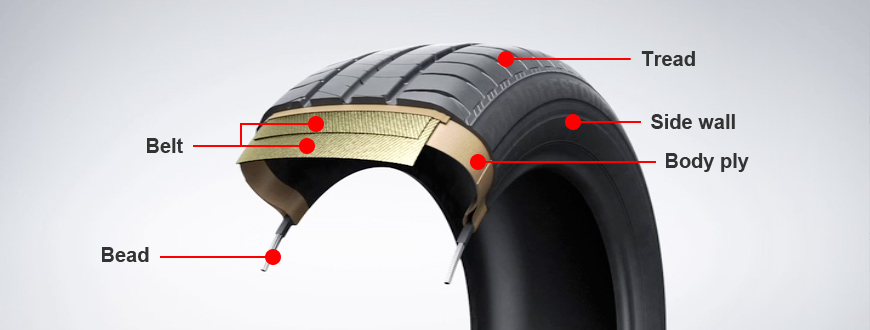 In this case, the prefix C is between the dimension indicator and the load index, for example, 31x10.50R15 C 109R.
In this case, the prefix C is between the dimension indicator and the load index, for example, 31x10.50R15 C 109R.
Letter designations that indicate the purpose of a particular tire may also be included in the model name. So, the letters M / T (Mud Terrain) denote mud tires, A / T (All Terrain) - universal off-road, H / T (Highway Terrain) - road, U / T (Urban Terrain) - city, H / P ( High Performance) - high-speed, racing. For example, Toyo's Open Country family has tires in all of these categories, with the exception of H/P.
The next group of designations is associated with seasonality. Tires can be winter, summer or all season. Winter tire markings include a snowflake pictogram as well as Winter inscriptions. As for the marking M + S (Mud + Snow, "mud and snow"), then everything is not so simple. Most often, tires with the M + S marking turn out to be not purely winter, but rather all-weather, and winter in this case means “European” rather than “Scandinavian” or “Russian”. In Russia, only a “snowflake” indicates winter tires. But such tires should not be considered really off-road or mud either! As a rule, they have an insufficiently sparse tread pattern, and therefore, on soft soils, they instantly “wash out”, turning into “slicks”. A lot of new off-road riders have experienced a major disappointment, thinking that M+S tires are just what they need ...
In Russia, only a “snowflake” indicates winter tires. But such tires should not be considered really off-road or mud either! As a rule, they have an insufficiently sparse tread pattern, and therefore, on soft soils, they instantly “wash out”, turning into “slicks”. A lot of new off-road riders have experienced a major disappointment, thinking that M+S tires are just what they need ...
On the sidewalls of tires, which are not only, but also positioned as all-season tires, three pictograms are applied: with the image of a snowflake, clouds with raindrops and the sun. In addition, such tires may carry additional markings on the sidewalls AW (All Weather, “all-weather”), A.G.T. (All Grip Traction, "traction in all conditions") or AS (All Season, "all-weather").
On the sidewalls of summer tires, additional signs can be applied in the form of an umbrella icon, as well as the words Aqua, Aquatred, Water, Aquacontact or Rain. This marking indicates that this tire model has increased resistance to hydroplaning and can be considered "rain".
The country of manufacture of the tire is also important information. Please note: this is the country where the factory where the tire was made is located, and not the one in which the manufacturer is registered. So on tires bearing the names of world-famous Italian, French, German and Japanese brands on the sidewalls, you can find the inscription Made in Russia, tires of a Taiwanese brand can be made in Vietnam or Thailand, and Toyo tires can be labeled as Made in Japan, or and Made in Malaysia.
For sale in the EU countries, tires must carry the CE certification mark with the product conformity number to the requirements of the European standard ECE - e11. However, for any company that has anything to do with cars, the most important market is the US market, and tire manufacturers are no exception in this regard. Therefore, all tires around the world are marked with the DOT code, developed at the beginning of the century by DOT, the Department of Transportation (US Department of Transportation).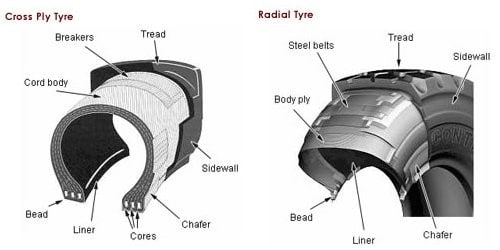 This alphanumeric code carries a lot of encrypted information, including the name of the manufacturer's brand and the country in which the tire-producing plant is located, size, type and a number of other features of the marked tire model. Some of this encrypted information duplicates other inscriptions on the side of the tire, but some data can only be found in this code. Alas, deciphering this code is not at all easy, you need to know the "inner kitchen" of the manufacturer or be able to use special applications. But some (at the same time very important) information can be obtained, so to speak, “with the naked eye”: the last two digits of the code indicate the year of manufacture of a particular tire, and the previous two digits indicate the week number.
This alphanumeric code carries a lot of encrypted information, including the name of the manufacturer's brand and the country in which the tire-producing plant is located, size, type and a number of other features of the marked tire model. Some of this encrypted information duplicates other inscriptions on the side of the tire, but some data can only be found in this code. Alas, deciphering this code is not at all easy, you need to know the "inner kitchen" of the manufacturer or be able to use special applications. But some (at the same time very important) information can be obtained, so to speak, “with the naked eye”: the last two digits of the code indicate the year of manufacture of a particular tire, and the previous two digits indicate the week number.
Why is this so important, you ask, because tires are not vegetables or sausages… Alas, if the storage conditions and rules are violated for a long period of time, tires quite regularly lose their qualities. So if you buy a brand new looking set of tires that are 5-7 years old and have since been stored in an unheated warehouse and not in the recommended positions, you are very likely to run into balance problems and then very fast wear..jpg)
And on the sidewalls, a variety of additional information can be placed, for example, homologation codes. Homologation means that this tire model is approved by one of the automakers for use on cars of its own production. For example, code MO1 means that these tires are designed for Mercedes cars, tires with codes N0-N3 are recommended to be installed only on Volkswagen Touareg and Porshe, code AO says that these tires are approved by Audi, code A means that you have tires for Toyota Auris, and an asterisk (*) indicates that these tires are recommended for BMW vehicles.
In addition to the inscriptions on the sidewalls, there is another important source of information. Since 2012, all tires sold in Europe have received a special label that must be stuck on the working surface of the tire. On this label, in addition to the article number, QR code and information about the manufacturer, tire model and size, you can find information on a number of important parameters, such as fuel efficiency and rolling resistance, external noise level and wet grip.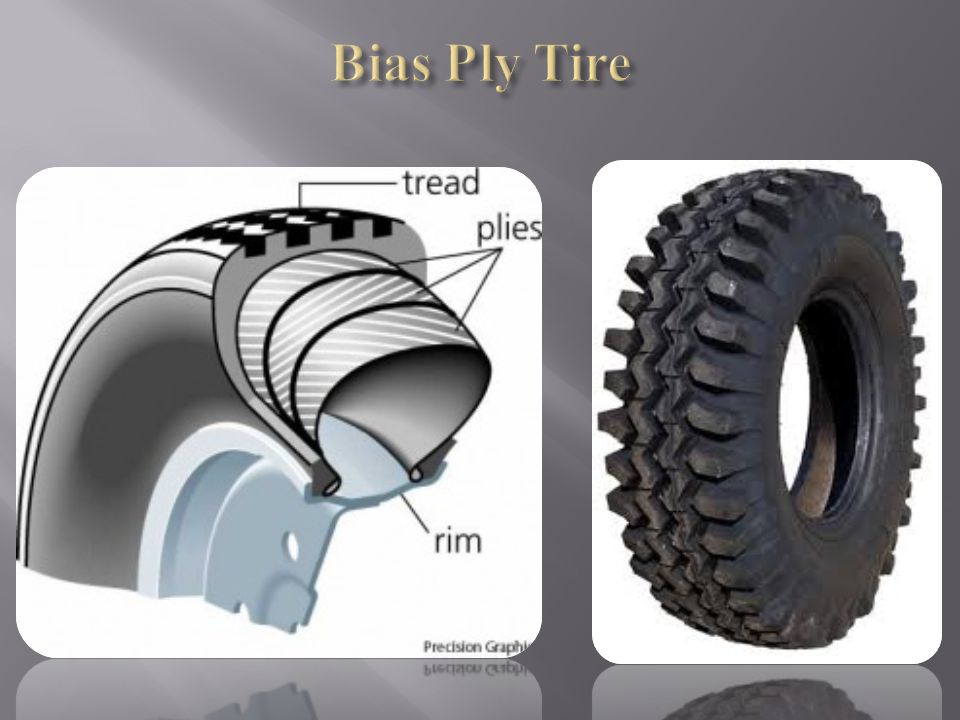 All this information is given in the form of visual pictograms and letter designations. For example, fuel efficiency is labeled A to G. Tires labeled A will have the lowest rolling resistance coefficient (about 6.5) and the highest fuel efficiency, while tires labeled G will have a drag coefficient of 12. For identical vehicles, equipped with such tires, the difference in fuel consumption per 1000 km will be about 6 liters!
All this information is given in the form of visual pictograms and letter designations. For example, fuel efficiency is labeled A to G. Tires labeled A will have the lowest rolling resistance coefficient (about 6.5) and the highest fuel efficiency, while tires labeled G will have a drag coefficient of 12. For identical vehicles, equipped with such tires, the difference in fuel consumption per 1000 km will be about 6 liters!
Similarly, the wet grip coefficient is ranked from A to F. The worse the grip, the longer the stopping distance, so the difference in stopping distance between a car traveling at 80 km/h and equipped with A-rated tires and F-rated tires is 18 meters.
Well, the level of acoustic comfort of a tire is indicated by a tire icon with schematic sound waves emanating from it. One wave means a quiet tire, the noise of which is at least 3 dB below the maximum permissible for Europe, two waves - a moderately noisy tire, the noise of which falls within the permissible limits, and therefore the operation of such tires in urban conditions is allowed.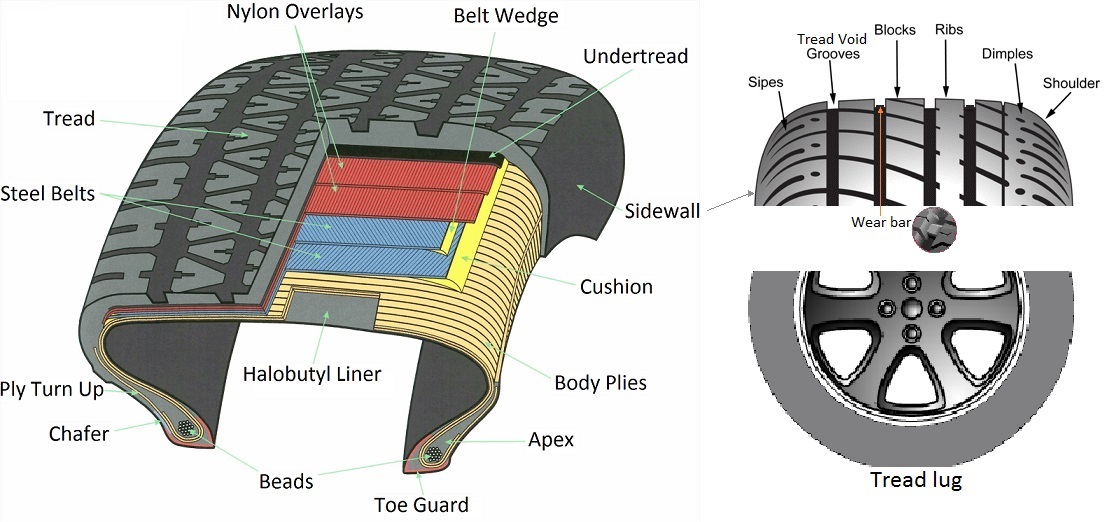 Finally, three waves signal that the noise of such tires exceeds the level allowed in the EU, and they can only be used outside the EU.
Finally, three waves signal that the noise of such tires exceeds the level allowed in the EU, and they can only be used outside the EU.
Now, armed with all this information, you can safely start choosing a new set of shoes for your car.
tires and rims
Articles / Used cars 5 reasons to buy and not to buy Nissan Teana II J32 Once Teana was one of the strongest players in the D-class. However, the class has gradually shrunk down to one Japanese sedan and a couple of Korean ones, and now it seems to have died out completely. However, the second half... eleven 0 0 30.10.2022
Articles / Interesting OSAGO crisis: why it does not cope with its function and it cannot be fixed In 2022, Russian car owners faced many problems and difficulties.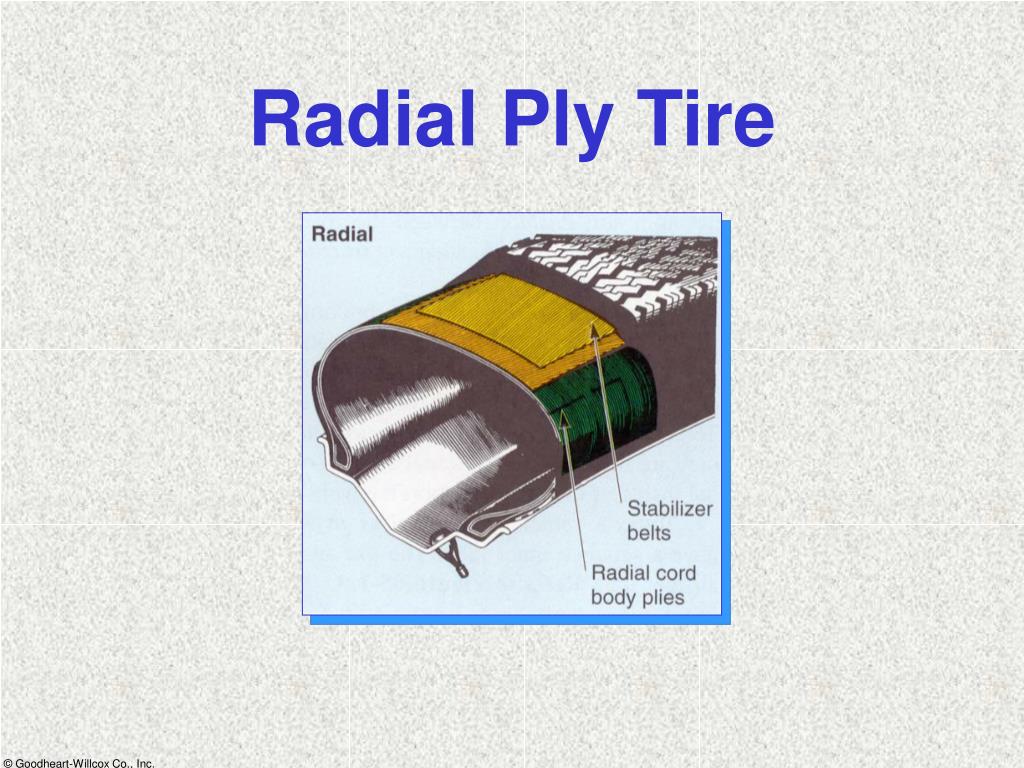 The shortage of cars, rising prices for them, the mass exodus of brands from the country and problems with spare parts are just... 625 0 2 28.10.2022
The shortage of cars, rising prices for them, the mass exodus of brands from the country and problems with spare parts are just... 625 0 2 28.10.2022
Articles / Financial questions What is E-OSAGO In the event of insured events, the rights of third parties will be able to protect the OSAGO policy. The car owner has the opportunity to buy online OSAGO insurance via the Internet. Paper version if desired... 269 0 eighteen 27.10.2022
Test drives / Test drive Haval Dargo vs Mitsubishi Outlander: the dog is barking, the stranger is coming In the Haval dealership in the south of Moscow, life is in full swing: buyers look at cars, communicate with managers and sign some papers. While I was waiting for the test Dargo, the same cross... 14808 7 201 13.09.2022
While I was waiting for the test Dargo, the same cross... 14808 7 201 13.09.2022
Test drives / Test drive Motor from Mercedes, emblem from Renault, assembly from Dacia: test drive of the European Logan 1.0 It would seem that what's new can be told about the second generation Renault Logan, known to every Russian taxi driver, as they say, up and down? However, this car has... 12600 ten 41 08/13/2022
Test drives / Test drive Geely Coolray vs Haval Jolion: Free Cheese? If! Do you want to buy a car today with a full warranty, on credit at an adequate rate, without wild dealer markups? Now this is still a task, because a full-fledged chain of "representation - s.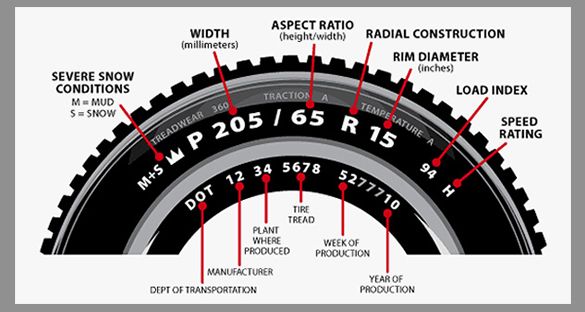 .. 9624 25 thirty 08/10/2022
.. 9624 25 thirty 08/10/2022
For many owners of cars deciphering the tire markings is a difficult task, since most people are not familiar with the symbols found on the side of the tire. Meanwhile, this information will be useful to any car owner, because thanks to it you will be able to buy tires that best meet your needs. For example, when buying summer or winter tires. In the material below, we have collected, structured information, and provided you with Tire marking designation in an interactive, easy-to-read format.
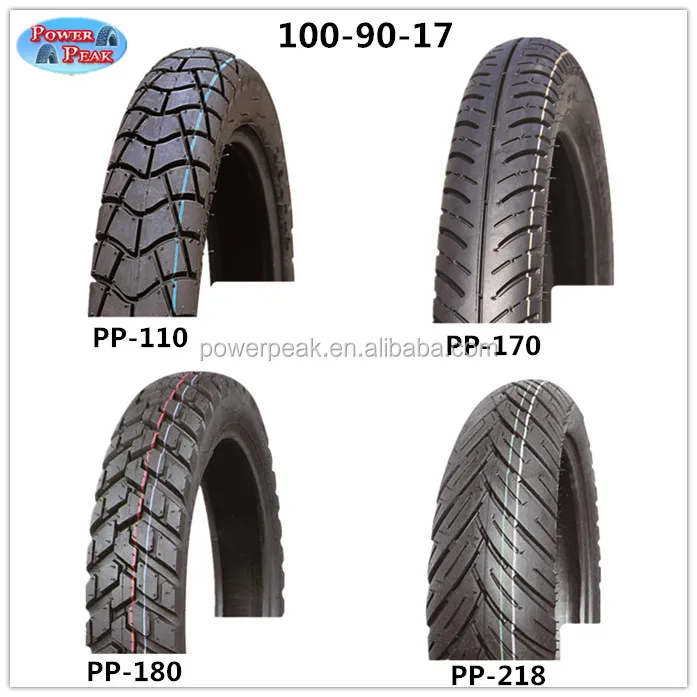
 See the table below for country and country numbers.
See the table below for country and country numbers. There are a large number of tire marking elements. To begin with, we list the main ones:
Explanation of designations on tires

Next, let's take a closer look at what it means and what possible values the designated “encryptions” can have.
Manufacturer . Usually the name of the manufacturer is written in capital letters so that it is clearly visible. This is done mainly for advertising purposes. In addition, many manufacturers have a logo made in the original style, which they try to convey to all their products. There are a huge number of manufacturers of car tires in the world, so it makes no sense to dwell on them.
Brand name or line . Many manufacturers own several brands under which tires for cars are produced. And almost everyone makes rubber in several lines and models. Within the same line, you can buy a tire with different sizes and characteristics. This greatly simplifies the choice and expands its possibilities.
Tire size
Tire size . Perhaps this is the most important marking of car tires. Consider it on a specific example - 195/60R14. In this case, 195 mm is the width of the tire profile. It is calculated as the distance between the outer edges of the sidewalls of an inflated tire (excluding protective belts, various markings and other additional means that may occur). The number 60 is the ratio of the profile height to its width, expressed as a percentage. In this case, 195 × 0.6 = 117 mm. The letter R means the English word Radial, which in translation means radial tire type (today, the radial type of rubber is the most used, it has replaced the older diagonal type everywhere). The last number (in this case 14) indicates the bore diameter (diameter according to the disc marking), expressed in inches. If the letter C (short for commercial) is added after the diameter, this means that the tire has an increased ply rating, so it can be used in small trucks, vans or minibuses. In the latter case, the load capacity index of such tires is written in two numbers. The first means the allowable load on a single tire, the second - on a dual tire.
In this case, 195 mm is the width of the tire profile. It is calculated as the distance between the outer edges of the sidewalls of an inflated tire (excluding protective belts, various markings and other additional means that may occur). The number 60 is the ratio of the profile height to its width, expressed as a percentage. In this case, 195 × 0.6 = 117 mm. The letter R means the English word Radial, which in translation means radial tire type (today, the radial type of rubber is the most used, it has replaced the older diagonal type everywhere). The last number (in this case 14) indicates the bore diameter (diameter according to the disc marking), expressed in inches. If the letter C (short for commercial) is added after the diameter, this means that the tire has an increased ply rating, so it can be used in small trucks, vans or minibuses. In the latter case, the load capacity index of such tires is written in two numbers. The first means the allowable load on a single tire, the second - on a dual tire.
For example, a 185/75 R16C 104/102S tire has increased strength and has a load index of 104 (900 kg) for a single installation, and 102 (850 kg) for a dual installation. In this case, the maximum allowable speed is 180 km / h (determined by the speed index S, we will touch on the load and speed indices below).
Some tires do not have a percentage between the width and height of the profile. In this case, you need to know that it is in the range of 0.8 ... 0.82. However, in all cases when this value is below 0.8, it must be indicated on the tire in increments of 0.05.
For tires made in the United States, there is an alternative tire designation system that is slightly different from the standard. Consider it on the following example - 35 / 12.5 R15 113Q. In this case, the number 35 means the outer diameter of the tire in inches . And 12.5 is the nominal width in inches. The rest of the information is identical to the standard described above. That is, the main difference is the use of inches instead of millimeters.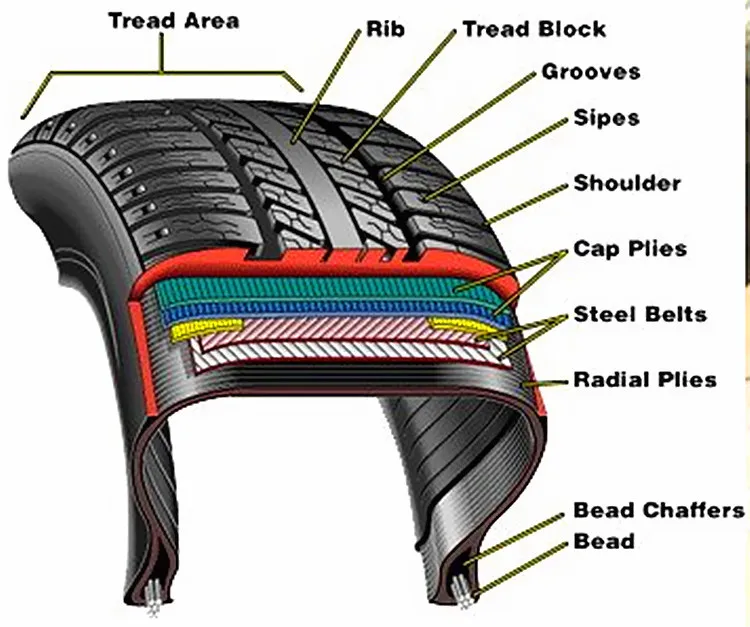
Correspondence table for car radial tires to wheel rim profile.
| Tire designation | 185/80r15c | 215/80r16c | 225/75r16c | 5.90-13 5 6J | 6J* | 6 1/2J*, 6J, 5 1/2J | 4J*, 4 1/2J |
Tire Load Index (Load Index). In this case, we are talking about the maximum allowable weight that the tire can withstand. This value is encrypted in the form of numbers, which by themselves do not show the mass, but only contain a cipher. An approximate value can be calculated if the gross vehicle weight is divided by four. The tire load index is usually written immediately after the size.
| Load index | Load, kg | Load index | 272 | 76 | 400 | 89 | 580 | 102 | 850 | 115 | 1215 | ||||
| 64 | 280 | 77 | 412 | 90 | 600 | 103 | 875 | 116 | 1250 | ||||||
| 65 | 290 | 78 | 425 | 104 | 9ATHER | ||||||||||
| 66 | 300 | 79 | 437 | 92 | 630 | 105 | 925 | 118 | 1320 | ||||||
| 67 | 307 | 80 | 450 | 93 | 650 | 106 | 950 | 119 | 1360 | ||||||
| 68 | 315 | 81 | 462 | 670 9004 107 107 107 1070048 | 975 | 120 | 1400 | ||||||||
| 69 | 325 | 82 | 475 | 95 | 690 | 108 | 1000 | 121 | 1450 | ||||||
| 70 | 335 | 83 | 487 | 96 | 710 | 109 | 1030 | 122 | 1500 | ||||||
| 71 | 345 | 84 84 84 | 0043 97730 | 110 | 1060 | 123 | 1550 | ||||||||
| 72 | 355 | 85 | 515 | 98 | 750 | 111 | 1090 | 124 | 1600 | ||||||
| 73 | 365 | 86 | 530 | 775 | 1120 | 1650 | 87 | 545 | 100 | 800 | 113 | 1150 | 126 | 1700 |
when studying the information given, it is necessary as such , that is, without reference to a specific vehicle and operating conditions. In addition, do not forget that the tire should not work in critical conditions, that is. at maximum load. If you have a passenger car, then you should not allow the load to increase to 80% of the given values. And if you are the owner of an SUV, then up to 70%. Excessive load not only brings the tire to failure, but is also extremely dangerous due to a possible explosion. And if it happens at high speed, it's can be deadly !
In addition, do not forget that the tire should not work in critical conditions, that is. at maximum load. If you have a passenger car, then you should not allow the load to increase to 80% of the given values. And if you are the owner of an SUV, then up to 70%. Excessive load not only brings the tire to failure, but is also extremely dangerous due to a possible explosion. And if it happens at high speed, it's can be deadly !
When choosing a tire, pay attention to the indices of maximum loads and speed. Always take the value with a margin, but do not overdo it. After all, the more load the tire is designed for, the more massive and heavier it will be. And this will directly affect the dynamics of the car and fuel consumption. It is better to stick to the "golden mean".
E1 - E48 (usually written in a circle). It means in which country the tire passed the ECE (Economic Commission for Europe) quality requirements and the standard number.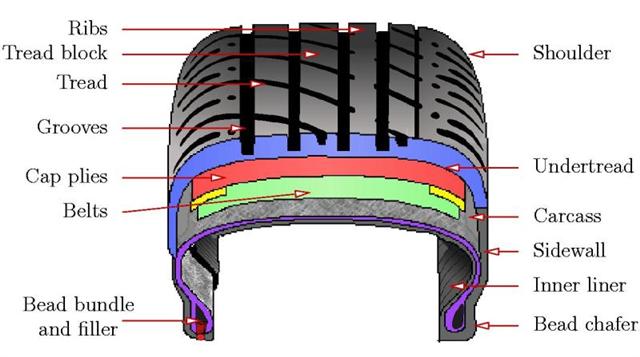
Designation for maximum load and maximum pressure
Maximum load (Max Load, measured in kilograms or pounds). The value is the same as above. The difference lies in the fact that the characteristic is given in absolute terms. When doing this, pay attention to where the tire is made so as not to confuse the values \u200b\u200bof kilograms or pounds (for reference, 1 pound = 0.4536 kg ).
Index assignments and maximum speed values
Speed index . This information is encrypted in the form of letters of the English alphabet. We present for you another tire marking table, where the decoding of the mentioned index is presented. The indicated speed is allowed with a maximum load of per tire. This index is usually specified after the load index.
(Max Pressure). This is one of the most important information available on the marking of passenger tires.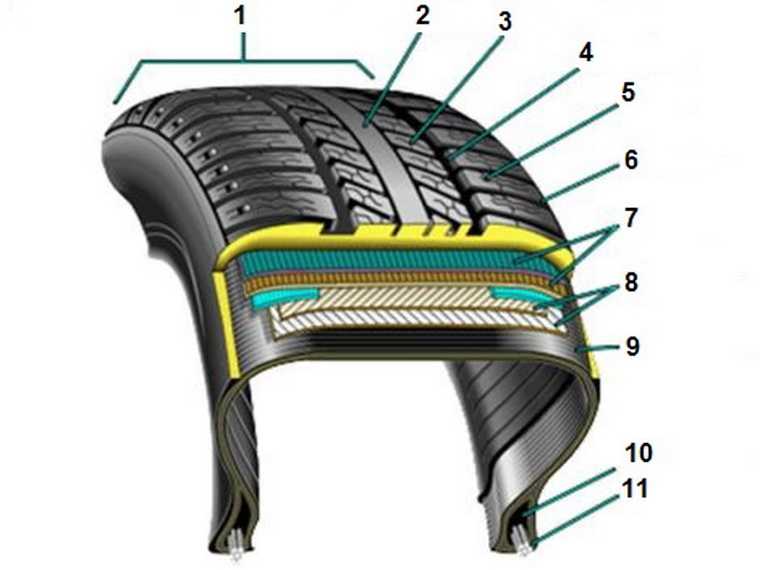 Pressure is reported in kPa or PSI (pounds per square inch, a US non-systemic unit of pressure). Often on tires you can find values \u200b\u200bin one and the other units at the same time. If only one value is indicated on the tire, then remember that 1 kgf / cm2 (technical atmosphere) \u003d 0.98 bar = 14.223 PSI = 98.066 kPa. For more information on what pressure should be in the tires of various cars, you can find in the following material.
Pressure is reported in kPa or PSI (pounds per square inch, a US non-systemic unit of pressure). Often on tires you can find values \u200b\u200bin one and the other units at the same time. If only one value is indicated on the tire, then remember that 1 kgf / cm2 (technical atmosphere) \u003d 0.98 bar = 14.223 PSI = 98.066 kPa. For more information on what pressure should be in the tires of various cars, you can find in the following material.
M+S lettering and winter tire image
M+S tire marking (sometimes M&S). This designation is used mainly by European tire manufacturers. The letter M stands for the English word Mud, which translates as "mud". And the letter S is Snow, snow. These designations tell the car owner that the tire can be used in appropriate conditions. The fact is that in European countries winters are less severe than in Russia, so there is more mud than snow and ice. And the tires, which are traditionally called “winter” in our country, are more likely to be called arctic by Europeans.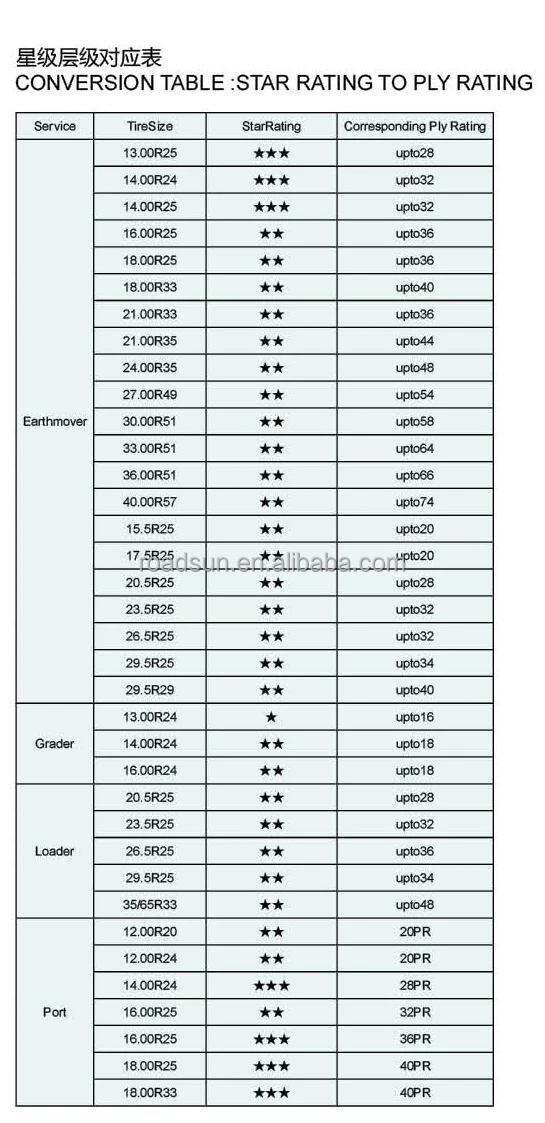
Tire markings according to season and surface . You can also find the following seasonal designation options:
One of the all-season tire designation options
It is worth adding that some manufacturers illustrate the weather properties of their tires not with the help of inscriptions, but by applying appropriate drawings.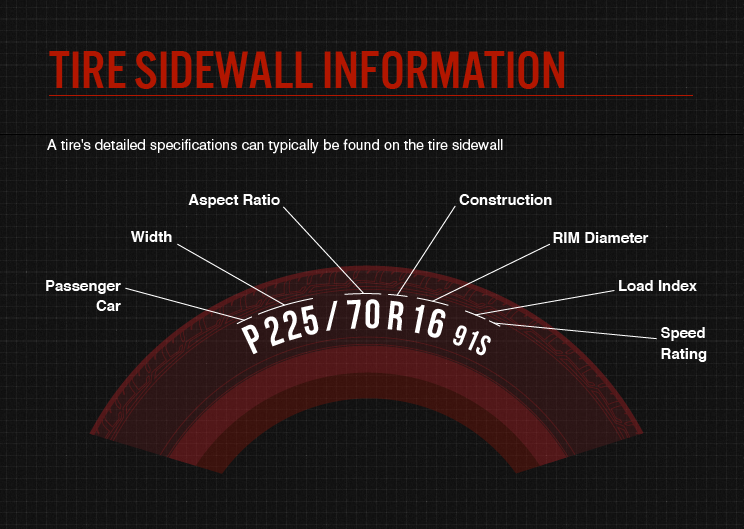 For example, if you come across 9 drawn together1216 snowflake, rain and sun - this means. that the tire is all-weather. To designate winter tires, use the image of snowflakes or of mountain peaks (sometimes both images are combined). In addition, on some models of winter tires, instead of standard wear indicators (having a size of 1.6 mm), winter ones are used (their thickness is 4 mm). Usually a winter tire can be distinguished by touch. Its surface is softer.
For example, if you come across 9 drawn together1216 snowflake, rain and sun - this means. that the tire is all-weather. To designate winter tires, use the image of snowflakes or of mountain peaks (sometimes both images are combined). In addition, on some models of winter tires, instead of standard wear indicators (having a size of 1.6 mm), winter ones are used (their thickness is 4 mm). Usually a winter tire can be distinguished by touch. Its surface is softer.
Common designation for all-weather tires
Rain tires . Next, we will consider how to decipher the marking of tires intended for use in conditions of large amounts of water. Such tires are indicated by the following words - Aquatred, Aquacontact, Rain, Water, Aqua. In some cases, instead of words, an umbrella is drawn on the side of the tire.
Tire function . Now consider where the tire can be used. The letters in front of the standard size will tell you about this:
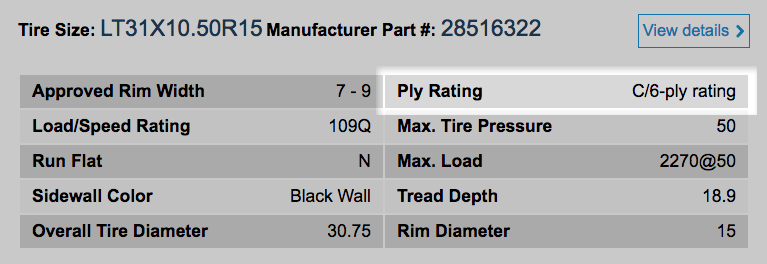 Can be used in a car.
Can be used in a car. Week and year of tire manufacture and DOT 9 mark0011
Year of manufacture . Car tire marking allows you to find out information about the month and year of tire production. In particular, this information is encrypted in four small numbers enclosed in an oval on the side surface of the product. The first two digits in this case mean the ordinal number of the week in the year, and the second - the year itself. For example, marking 1015 tells us that the tire was released in 2015, on the 10th week of the year, that is, approximately at the beginning of March.
Indexes for temperature, braking and wear
Indexes .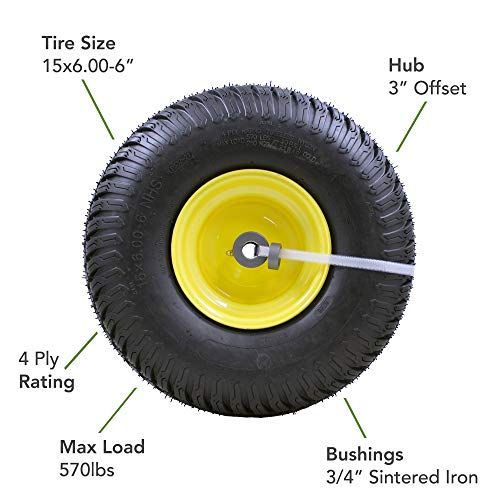 Often, three indices are written on American tires after the size:
Often, three indices are written on American tires after the size:
View of tire wear indicator
Design details . Sometimes, when marking all-season and other tires, the manufacturer writes information from which layers the coating is made. For example, the inscription TREAD PLIES: 2 POLYESTER CORD+2 STEEL CORD+1 NYLON CORD means that the coating consists of two layers of polyester, two layers of metal cord and one layer of nylon cord.
For example, the inscription TREAD PLIES: 2 POLYESTER CORD+2 STEEL CORD+1 NYLON CORD means that the coating consists of two layers of polyester, two layers of metal cord and one layer of nylon cord.
Wear indicator . It shows how much the tire has worn out, and accordingly, is it time to replace it. Usually located at the bottom of the groove located as close as possible to the inscription TWID (sometimes the inscriptions TWI , DSI are used). An arrow points to its location, making it easier to find. For more information about tire wear, see the corresponding video guide.
Spikes . On tires where studs are used, manufacturers indicate the following information:
 Spikes with an oval core.
Spikes with an oval core. Color marks . In some cases, tire manufacturers use color coding for their products. So, for this, white, red and yellow colors are used, in particular, the corresponding circles or triangles.
Tire color codes
Put a red dot or triangle at the hardest spot on the tire sidewall. If you are installing it on an alloy wheel, then this point must be aligned with the L mark on the wheel. A white dot or triangle means the most flexible spot on the sidewall. When installing rubber on an alloy wheel, this place should be diametrically opposed to the L mark. The yellow triangle means the lightest place, which must be combined with the place where the spool is installed on the disk.
Occasionally, colored lines can be found on the tread of a new tire. They are factory markings that help warehouse workers keep tires with certain specifications in one place.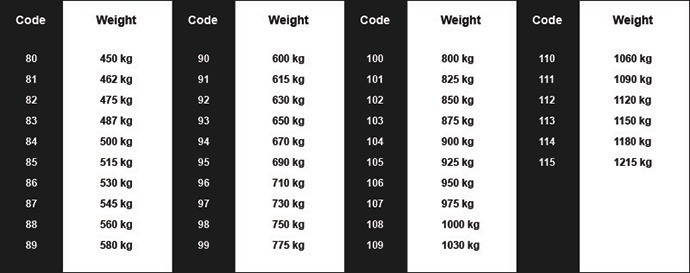 On the other hand, in the presence of such stripes, the consumer can be sure that the tire has not yet been in use.
On the other hand, in the presence of such stripes, the consumer can be sure that the tire has not yet been in use.
Puncture protection information . Tire manufacturers use different technologies to protect tires from cuts and punctures. In particular, different manufacturers designate them differently. Below is a correspondence table.
Vehicle tire color code . If the manufacturer puts some color advertising or other designations on the side of the tire, then in coded form it looks like this:
 Contour white letters on the sidewall of the tire.
Contour white letters on the sidewall of the tire. Additional information . When marking winter and summer tires, manufacturers sometimes write additional information about the qualities and characteristics of their products. So, sometimes you can find the following designations:
Also, you should remember that most of the world's well-known tire manufacturers have their own designations for some of the nuances, operating conditions and technologies used in the manufacture.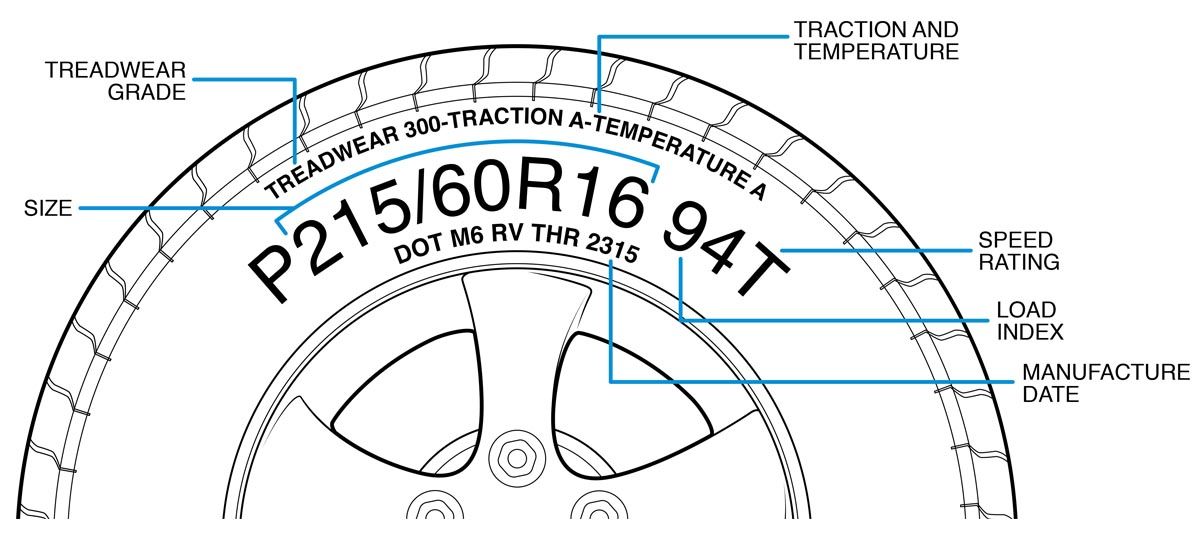 You can find this information on the official website of the rubber manufacturer.
You can find this information on the official website of the rubber manufacturer.
Try not only to install tires of the same size and design, but also of the same model and manufacturer on your car. After all, despite their external similarity, different rubber has different characteristics, which in critical situations can play a decisive role.
Also avoid the following situations when fitting different tires to your vehicle:
We present you a table with information about the recommended options for changing tire sizes.
| Table with information on the replacement of rubber | |
|---|---|
| The dimension of the replaced tire | Option option (at the beginning of the list is the most suitable option) |
| 135/80r12 | 155/70r12, 155/65/65/65/65/65/65/65/65/65/ |
| 165/70R13 | 185/65R13, 165/65R14, 175/70R13, 185/60R14, 195/50R15 |
| 175/70r13 | 175/65R14, 185/60R14, 185/65/155/155/155/15/165/15 R13, 165/70R14, 165/65R14 |
| 175/70R14 | 185/65R14, 195/60R14, 195/55R15 |
| /70048 | 195/60r14, 20/60/60/60/60/60/60/60/60/60/60/60/60/60/60/60/60/60r |
| 195/65R15 | 215/60R15, 235/55R15, 205/55R16, 215/55R15 |
| 195/70R15 | 205/65R15, 225/60R15, 205/55R16 |
| 205/70R15 | 215/65R15, 235/60R15, 205/65R15, 225/65R15 |
| 205/70R15 | 205/75R15, 215/65R15 |
The data from the table will help you choose the right tire size and the size that best suits your car.